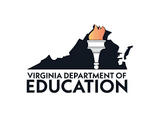
English Instructional Plan – Beowulf and Black Panther
- Subject:
- English
- Reading
- Material Type:
- Lesson Plan
- Author:
- VDOE Project Team
- Date Added:
- 04/22/2022

English Instructional Plan – Beowulf and Black Panther
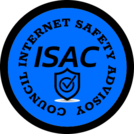
The Digital Citizenship+ (Plus) Resource Platform (DCPR) (previously called the Digital Literacy Resource Platform (DLRP)) is an evolving collection of learning experiences, visualizations, and other educational resources (collectively referred to as “tools”) designed and maintained by the Youth and Media team at the Berkman Klein Center for Internet & Society at Harvard University. You can you use the DCRP to learn about different areas of youth’s (ages 11-18) digitally connected life, including:
(1) Artificial Intelligence (AI), (2) Civic and Political Engagement, (3) Computational Thinking, (4) Content Production, (5) Context, (6) Data, (7) Digital Access, (8) Digital Economy, (9) Digital (Literacy), (10) Identity Exploration and Formation, (11) Information Quality, (12) Law, (13) Media (Literacy), (14) Positive/Respectful Behavior, (15) Privacy and Reputation, (16) Safety and Well-being, and (17) Security.
These tools aim to empower you with knowledge about connected learning environments and other parts of the digital world so you can make the choices that are right for you. If you are responsible for educating others, these tools can also support you as you teach, parent, or fill other valuable guidance roles. Our goal is to promote the co-creation of trustworthy and supportive digital spaces for all of us.
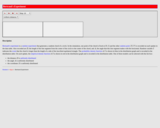
This resource consists of a Java applet and expository text. The applet is a simulation of Bertrand's experiment: a random chord on a circle The event of interest is whether the length of the chord is larger than the length of the inscribed equilateral triangle. Three models for generating the random chord can be used.
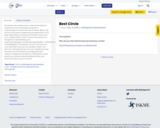
Dan Meyer has created many mathematics lessons centered around storytelling, along with a methodology for using these with students. Before you do any of his lessons, please see the explanation at his blog: https://blog.mrmeyer.com/2011/the-three-acts-of-a-mathematical-story/ To see all the lessons in a Google Docs spreadsheet, go to https://docs.google.com/spreadsheets/d/1jXSt_CoDzyDFeJimZxnhgwOVsWkTQEsfqouLWNN
C6Z4/edit#gid=0
The lessons are all CC BY, and you may edit these to fit your own students’ needs. The links from #GoOpenVA go to his own website because the structure of the lessons (including pertinent videos) is integral to the delivery of the lessons. Some lessons are stored as downloadable zip files, and these are noted as part of the link.

Students review the characterstics of invertebrate groups in this fun activity where they get to choose one group for a team name.
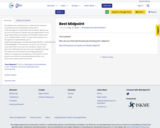
Dan Meyer has created many mathematics lessons centered around storytelling, along with a methodology for using these with students. Before you do any of his lessons, please see the explanation at his blog: https://blog.mrmeyer.com/2011/the-three-acts-of-a-mathematical-story/ To see all the lessons in a Google Docs spreadsheet, go to https://docs.google.com/spreadsheets/d/1jXSt_CoDzyDFeJimZxnhgwOVsWkTQEsfqouLWNN
C6Z4/edit#gid=0
The lessons are all CC BY, and you may edit these to fit your own students’ needs. The links from #GoOpenVA go to his own website because the structure of the lessons (including pertinent videos) is integral to the delivery of the lessons. Some lessons are stored as downloadable zip files, and these are noted as part of the link.
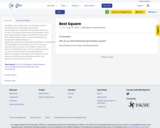
Dan Meyer has created many mathematics lessons centered around storytelling, along with a methodology for using these with students. Before you do any of his lessons, please see the explanation at his blog: https://blog.mrmeyer.com/2011/the-three-acts-of-a-mathematical-story/ To see all the lessons in a Google Docs spreadsheet, go to https://docs.google.com/spreadsheets/d/1jXSt_CoDzyDFeJimZxnhgwOVsWkTQEsfqouLWNN
C6Z4/edit#gid=0
The lessons are all CC BY, and you may edit these to fit your own students’ needs. The links from #GoOpenVA go to his own website because the structure of the lessons (including pertinent videos) is integral to the delivery of the lessons. Some lessons are stored as downloadable zip files, and these are noted as part of the link.
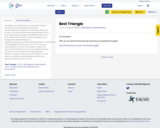
Dan Meyer has created many mathematics lessons centered around storytelling, along with a methodology for using these with students. Before you do any of his lessons, please see the explanation at his blog: https://blog.mrmeyer.com/2011/the-three-acts-of-a-mathematical-story/ To see all the lessons in a Google Docs spreadsheet, go to https://docs.google.com/spreadsheets/d/1jXSt_CoDzyDFeJimZxnhgwOVsWkTQEsfqouLWNN
C6Z4/edit#gid=0
The lessons are all CC BY, and you may edit these to fit your own students’ needs. The links from #GoOpenVA go to his own website because the structure of the lessons (including pertinent videos) is integral to the delivery of the lessons. Some lessons are stored as downloadable zip files, and these are noted as part of the link.
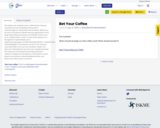
Dan Meyer has created many mathematics lessons centered around storytelling, along with a methodology for using these with students. Before you do any of his lessons, please see the explanation at his blog: https://blog.mrmeyer.com/2011/the-three-acts-of-a-mathematical-story/ To see all the lessons in a Google Docs spreadsheet, go to https://docs.google.com/spreadsheets/d/1jXSt_CoDzyDFeJimZxnhgwOVsWkTQEsfqouLWNN
C6Z4/edit#gid=0
The lessons are all CC BY, and you may edit these to fit your own students’ needs. The links from #GoOpenVA go to his own website because the structure of the lessons (including pertinent videos) is integral to the delivery of the lessons. Some lessons are stored as downloadable zip files, and these are noted as part of the link.

This resource consists of a Java applet and expository text. The applet illustrates Bayesian estimation of the probability of heads for a coin. The prior beta distribution, true probability of heads, and the sample size can be specified. The applet shows the posterior beta distribution.
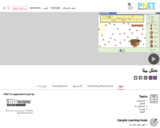
Watch beta decay occur for a collection of nuclei or for an individual nucleus.
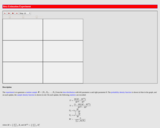
This resource consists of a Java applet and expository text. The applet simulates a random sample from a beta distribution, and computes standard point estimates of the left and right parameters. The bias and mean square error are also computed.

Students will read a fiction text to create a journal in the voice of a character of their choice. Students will record noticings about the character's characterization and how incidents in the plot lead to a change in their character.

Students will be given ordinal number cards and will have to put the numbers in the correct order. Next the students will discuss algorithms and tasks that have steps to complete in their daily lives. Students will have to work with a partner to plan an algorithm for how to get through a maze, then the students will have to use that algorithm to get through the maze.
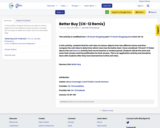
In this activity, students find the unit rates of various objects from two different stores and then compare the unit rates to determine which store has the better deal.
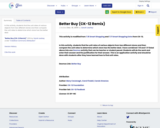
In this activity, students find the unit rates of various objects from two different stores and then compare the unit rates to determine which store has the better deal.

This resource provides a menu of self-directed art-making challenges, each of which relates to a work of art in the Virginia Museum of Fine Arts collection. Give your students voice and choice as they investigate authentic works of art and work to develop a visual language, convey complex ideas, and solve problems creatively.
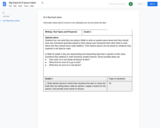
This resource contains ideas for implementing the Big Dayta Project in grades 1-12.
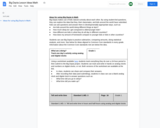
This resource contains ideas for implementing the Big Dayta Project in grades 1-12.

The student will be able to list the steps in the water cycle as well as the main energy source that drives the water cycle: the sun. Students will also be able to understand that the water cycle is similar to an algorithm in computer science because it lists the steps needed in order for the water cycle to work. The students will be able to identify the sun as the event that causes the water cycle to work.